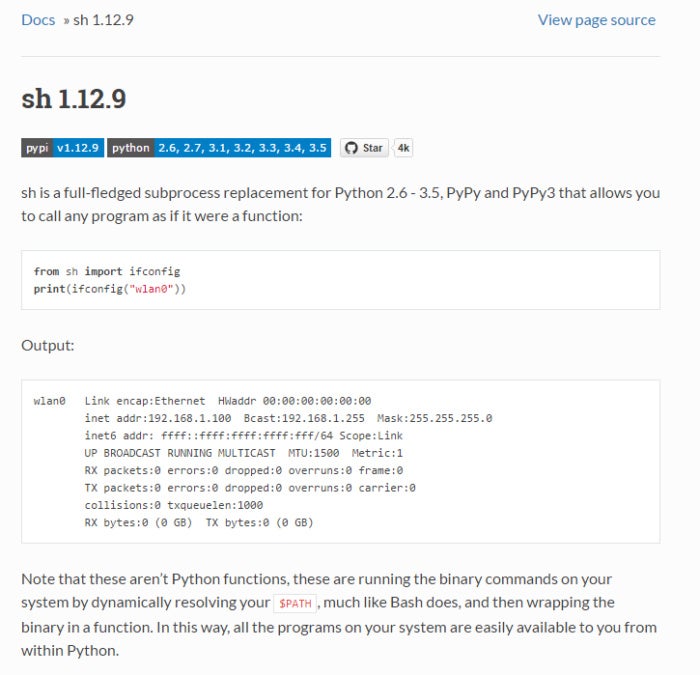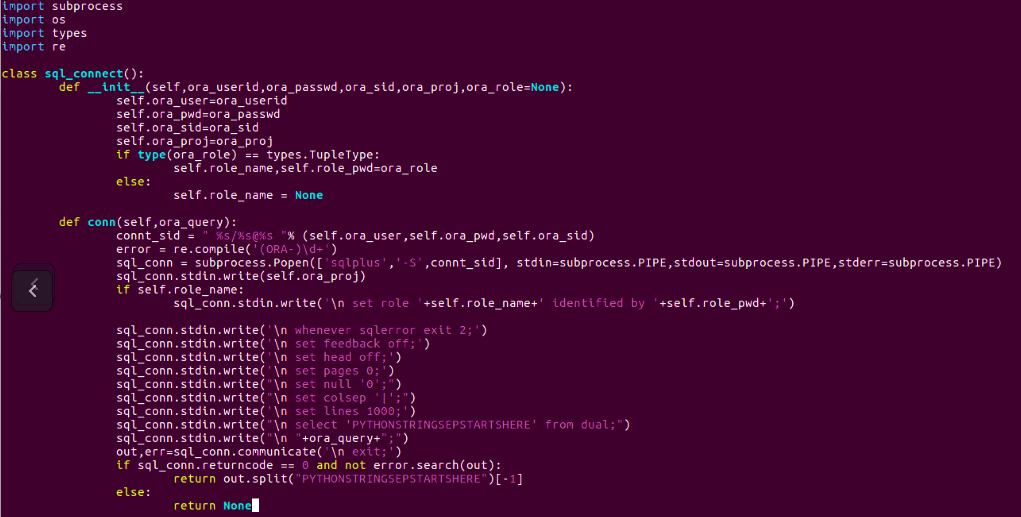

SUBPROCESS PYTHON LIBRARY FULL
The full function signature is the same as that of the Popen constructor - this functions passes all supplied arguments directly through to that interface.Įxamples: > subprocess.call() The arguments shown above are merely the most common ones, described below in Frequently Used Arguments (hence the slightly odd notation in the abbreviated signature). Wait for command to complete, then return the returncode attribute. subprocess.call(args, *, stdin=None, stdout=None, stderr=None, shell=False) For more advanced use cases when these do not meet your needs, use the underlying Popen interface. The recommended way to launch subprocesses is to use the following convenience functions.

PEP 324 – PEP proposing the subprocess module 1. It is a drop in replacement with better behavior in many situations.
SUBPROCESS PYTHON LIBRARY INSTALL
This corresponds to the way most interactive programs operate - send a line of output then wait for a line of input.POSIX users (Linux, BSD, etc.) are strongly encouraged to install and use the much more recent subprocess32 module instead of the version included with python 2.7. Line buffering means that you will get each line when the child program sends a line feed. A TTY device will force line buffering (as opposed to block buffering). The program may have put data in its output that remains unflushed because the output buffer is not full then the program will go and deadlock while waiting for input - because you never send it any because you are still waiting for its output (still stuck in the STDIO's output buffer). Short of recompiling your program to include fflush() everywhere or recompiling a custom stdio library there is not much a controlling application can do about this if talking over a pipe. This is usually not helpful for interactive programs. The STDIO lib will use block buffering when talking to a block file descriptor such as a pipe. These are: _IOFBF for block buffered _IOLBF for line buffered and _IONBF for unbuffered. More information: the Standard IO library has three states for a FILE *. You could flush the input side of a pipe, whereas you have no control over the stdio library buffer. The pipe buffer is another area that can cause problems. Don't confuse the stdio lib's buffer with the pipe's buffer.

The result is that you never receive the message, yet the child application will sit and wait for you to type a response. In block buffered mode, the stdio library will not put the message into the pipe even though a linefeed is printed. Take the situation where a program prints a message «Enter your user name:\n» and then waits for you type type something. Block buffering is more efficient when writing to disks and pipes. This causes most interactive programs to deadlock. In this mode the currently buffered data is flushed when the buffer is full. In that case it switches from line buffer mode to block buffered. The stdio library is smart and can tell that it is printing to a pipe instead of a TTY. The problem comes when you connect a pipe. Everytime the program prints a line-feed the currently buffered data will get printed to your screen. Normally output is line buffered when a program is printing to a TTY (your terminal screen). One of the features of the stdio library is that it buffers all input and output. The second reason is because most applications are built using the C Standard IO Library (anything that uses #include ).
SUBPROCESS PYTHON LIBRARY PASSWORD
This is why you cannot redirect the password prompt because it does not go through stdout or stderr. Something like SSH will do this when it asks you for a password. Pipes do not work very well for interactive programs and pipes will almost certainly fail for most applications that ask for passwords such as telnet, ftp, or ssh.įirst an application may bypass stdout and print directly to its controlling TTY. If you just want to get the output from ls, uname, or ping then this works. Буду копаться в сторону tty.Ī pipe works fine for getting the output to non-interactive programs.


 0 kommentar(er)
0 kommentar(er)
